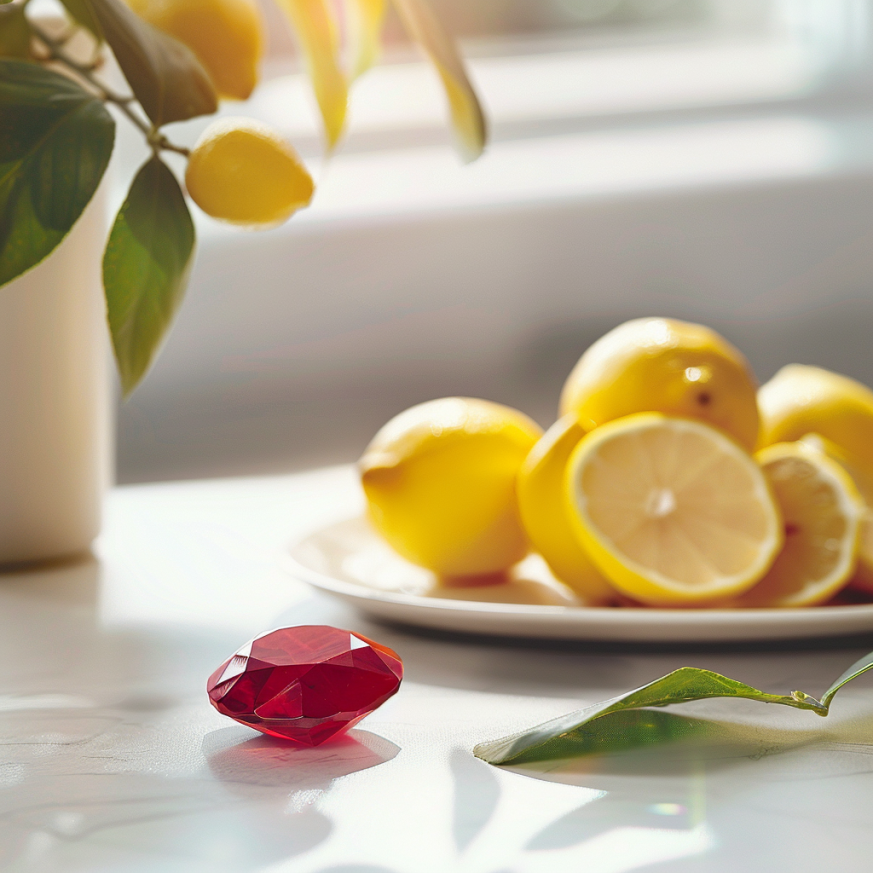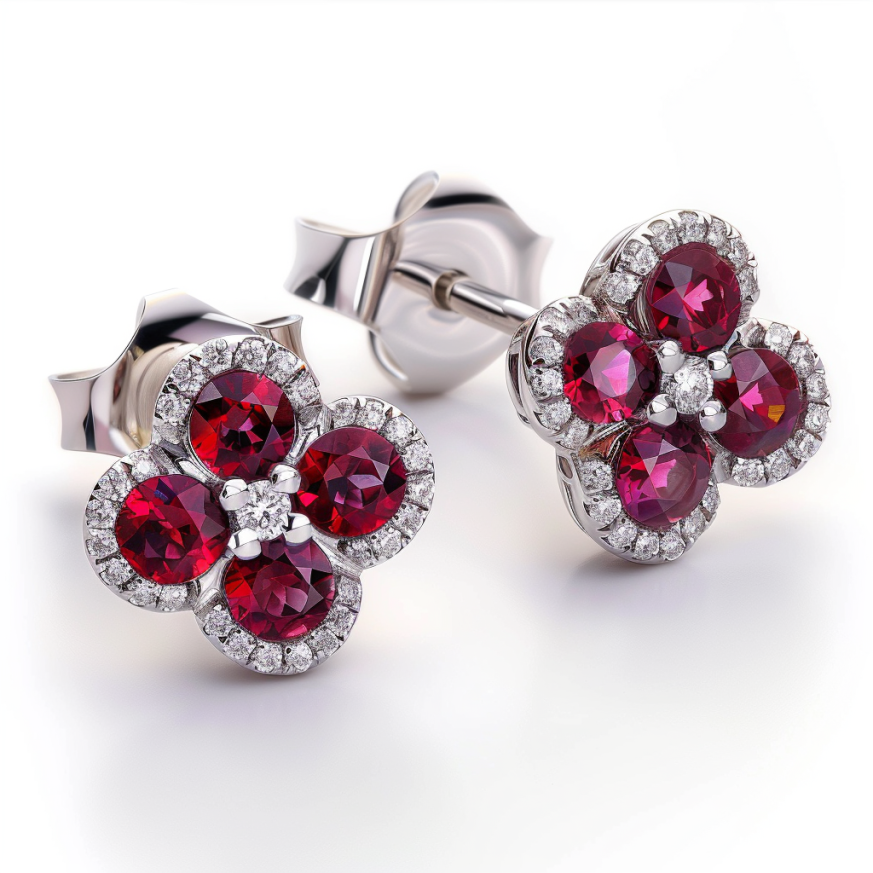The Ideal Ruby Color
When selecting a ruby, the ideal ruby color is the most important factor in determining its beauty and value. The finest rubies display a rich, vibrant red that captures light and enhances the gemstone’s fiery brilliance. Color grading for rubies considers hue, tone, and saturation, each playing a crucial role in defining the perfect red.

1. Hue – The True Color of Ruby
The primary hue of a ruby should be red, with minimal secondary hues. The most valuable rubies exhibit a pure red or slightly purplish-red hue.
- Most desirable hues: Pure red to slightly purplish-red.
- Less valuable hues: Orangish-red, brownish-red, or too pinkish.
- Pigeon Blood Red: The most sought-after hue, often found in Burmese rubies, featuring an intense red with a slight blue undertone.
2. Tone – Lightness vs. Darkness
Tone refers to how light or dark the ruby appears. The best rubies have a medium to medium-dark tone, ensuring rich color without being too dark or too light.
- Too light: Resembles pink sapphire rather than a true ruby.
- Too dark: Red color may appear dull or blackish.
- Ideal tone: A well-balanced, deep red that remains vibrant under different lighting conditions.
3. Saturation – The Depth of Red
Saturation determines the intensity and purity of the ruby’s color. The highest-quality rubies have vivid saturation, meaning the red is strong and pure without brown or gray undertones.
- Highly saturated rubies: Appear bright, lively, and rich in color.
- Low saturation rubies: May look pale, dull, or have brownish tones, reducing their value.

4. The Influence of Lighting
A ruby’s color can appear different under various lighting conditions. Fine rubies, especially those with high chromium content, exhibit strong fluorescence, glowing intensely in natural sunlight. Rubies with higher iron content (such as Thai rubies) may appear darker and less vibrant.
5. Natural vs. Treated Ruby Color
While some rubies naturally possess an ideal color, many undergo heat treatment to enhance their hue and saturation. Untreated rubies with exceptional color are extremely rare and highly valuable.
Conclusion
The ideal ruby color is a rich, intense red with slight purplish tones, medium-dark tone, and vivid saturation. These characteristics define the world’s most beautiful rubies, making them the most sought-after gemstones in the world.
